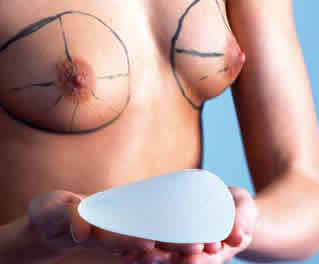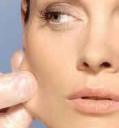Since ancient times the female breast is accepted as a unique sym bol for femininity , seduction and fertility even in very distinct cultures all over the world . Apart of its cultural role the female breast has even gained more importance in our modern society when we have a loo k at fashion , music and media , were the perfect bust nearly sems to be a key element for suces .
>>>Apart from its cultural role, the female breast has gained even greater importance in
our modern society.
Speaking only of the societies based on western ideals of beauty, the image of the “ideal†female breast changed a lot during the last century following the great changes in social life like sexual liberation in the late sixties, upcoming feminism, the new femininity of the eighties and the androgyny of the nineties which substantially influenced the self-confidence of especially the young woman regarding her looks as well as her outer image in society, media and fashion. The new millennium, in spite of its obvious futureorientated acceleration and progression of all aspects of life, actually recreated a female look and style that is reminiscence to the times when a full breast was an important part of any woman’s sensual and seductive femininity.
>>>The breast of the young woman between 18 and 30 years of age has totally different needs from those of a woman of over 30 years who has maybe already had a baby.

This reborn image being transmitted by topmodels at the current fashion shows, by young female stars in the movies and by famous pop stars is reflected in every aspect of fashion and social life and makes more and more younger women to undergo plastic surgery to achieve the bust line that they feel belongs to them but accidentally was not given to them by nature.
From a plastic surgeons view, the female breast is something very delicate to change because in has an evident impact on the patient’s life and contrary to the image created by many so called “Aesthetic surgery businesses†you can not seriously offer a one price-one technique solution to achieve excellent aesthetic results. The very complex composition of the female breast consisting of glandular (milk-producing) tissue, fatty tissue and numerous fibre-like bands which hold the breast in its natural form demands anatomical expertise and individual techniques which take in consideration the age-related changes of the breast tissue. The breast of the young woman between 18 and 30 years of age has totally different needs regarding the type and shape of the implant, the position of the implant and even the position of the scars than a woman over 30 years with children. It is important to know that the tissue composition of the female breast isn’t static, but tends to change regarding the relation between glandular tissue and fatty tissue which subsequently affects firmness, elasticity and shape of the breast.
Therefore, the operating technique must be carefully adapted to the age of the patient taking in consideration the following elements :
Contrary to most women who did give birth, young women with small breasts mostly don’t have any or only minimal sagging of the breast, so the fold under the breast is not very accentuated and may even be absent. This fact diminishes the advantage of placing the implants via an incision in this fold, because the scars are not automatically hidden by the normal form of the breast like in older women. So the alternative access placing the implants via a small incision below the areola can provide excellent results with a scar even less visible and therefore needs to be considered carefully together with the treating surgeon. After a decision for the placement of the future scars has been taken, the position of the implants in the breast needs to be evaluated. Basically, a breast implant can be placed directly underneath the gland overlying the pectoral muscle or it can be placed underneath the muscle. Besides the patient’s expectations regarding the desired shape of the enlarged breast the age and the actual shape of the breasts play a very important role in making that decision. In a young woman presenting no or minimal sagging of the breast, a good elasticity of the skin and a normal breast shape, placing the implant underneath the muscle provides excellent aesthetic outcome, a better protection of the implant through the muscle and more satisfying long term results because the muscle prevents the implant from sagging.
Also if the breast is very small and the desired augmentation is more than one size, the position behind the muscle is advisable, as the glandular tissue would not cover the implant, and the result would not be natural.
>>>Today’s market offers a broad variety of different implant shapes and sizes.
On the other hand, if the patient is older and maybe has already given birth and gone
through a period of breastfeeding, the shape of breast may require the need to put the implant directly underneath the gland to provide enough volume to fill up the skin stretched by sagging.
The last important point to consider together with the treating surgeon is the style or shape of the implant. As in all other areas of life, science and technology provided a steady and remarkable improvement of breast implants during the last 10 years. Modern silicone implants have a highly resistant shell covering a soft, gel-like core, therefore providing a soft, natural feeling never achieved before while offering implant life expectations of 15 years and more. Today’s market offers a broad variety of different implant shapes and sizes which allow for an individual solution for almost every patient. Any responsible plastic surgeon should thoroughly discuss the different types of implants with the patient, and should provide the possibility to touch them, to know how they feel and to try out different shapes and sizes by wearing them inside a bra.
>>>Therefore, the operating technique must be carefully adapted to the age of the patient.
Based on his experience, the surgeon will suggest a certain range of implants that will suit the individual needs of the woman, but in most cases there will be the possibility to choose between a more rounded breast form with a little bit more volume in the upper part or a more natural, tear shaped form; or to decide between different degrees of implantsoftness referring to the patient’s individual taste.
There is no unique breast shape that can be taken to be “the ideal breast†for every woman; the most important thing when it comes to deciding about the size and shape is to give every woman her own very unique shape that suits her body and style. The seduction evoked by a perfect bust line is not only related to volume, but to an individual harmony in the relation between the breast and the chest.
This kind of harmony, that can be achieved at any age, is what we always aim to create in our patients.
Taking care of the individual needs of the woman’s anatomy and taking into consideration the elements mentioned above, the breast augmentation with silicone implants is a safe and reliable procedure with excellent and long lasting aesthetic results, especially when performed on younger women.
The following interview with a 29 year old patient is an example of the results that can be achieved with implants in a patient who has slightly saggy breast but does not want a correction with an additional uplift. The excellent results achieved by breast augmentation in a patient who has small breasts without any sagging are illustrated by photos of another 26 year old patient.
—————————————————————————-
Editorial: Pier Albrecht, Pierre Albrecht, Pierre Albrecht Marbella,
Pier Albrecht Marbella, Dr. Pierre F. Albrecht, Pierjean Frank Albrecht, Marbella Clinic














